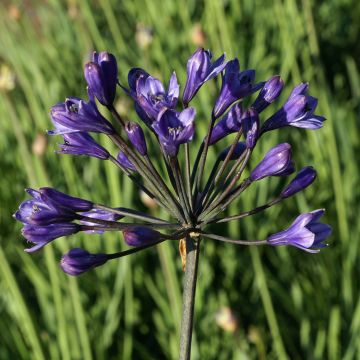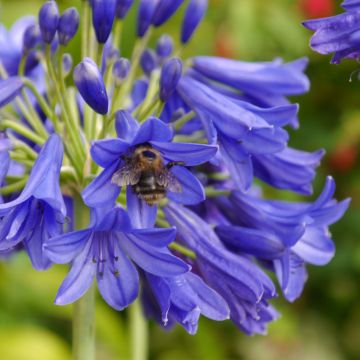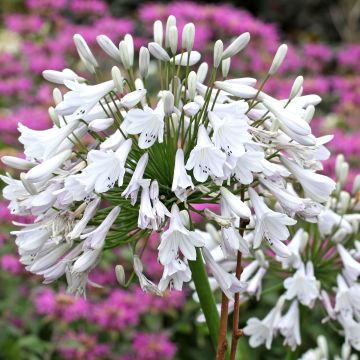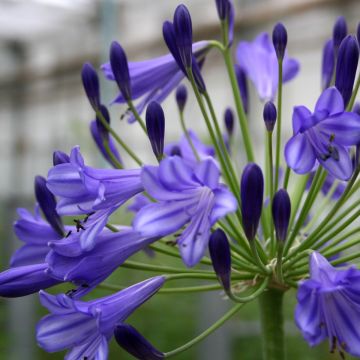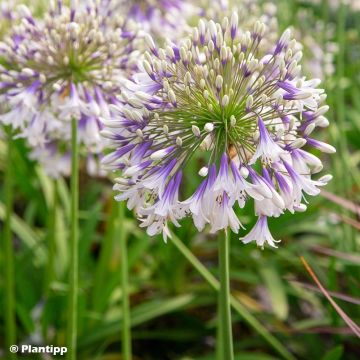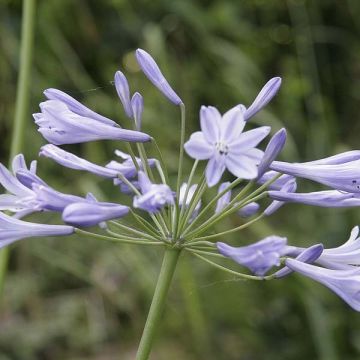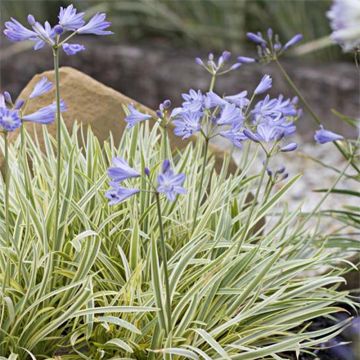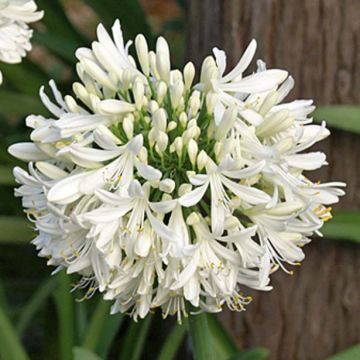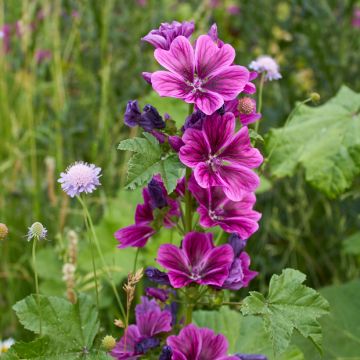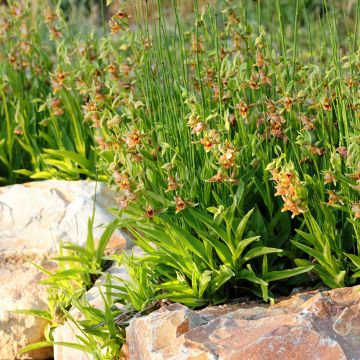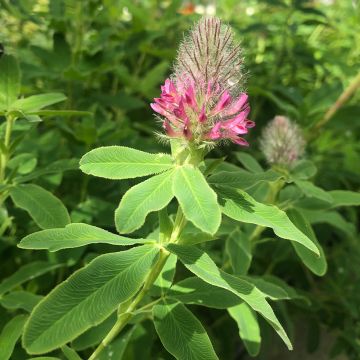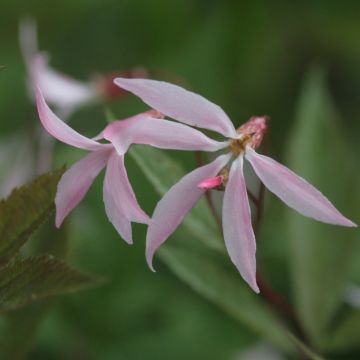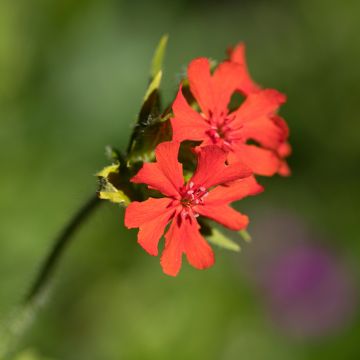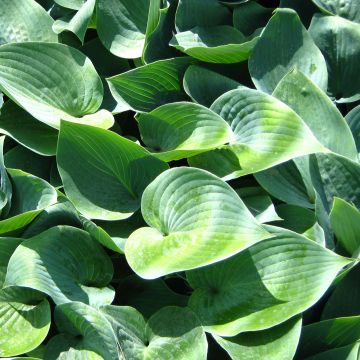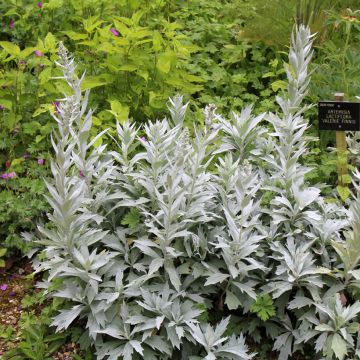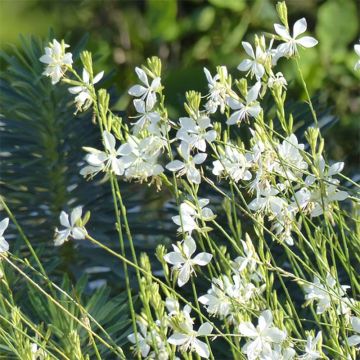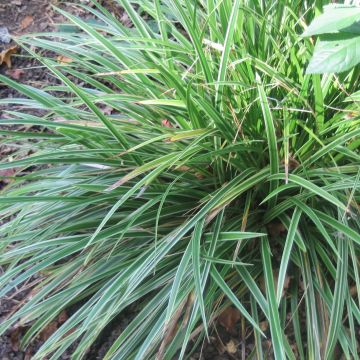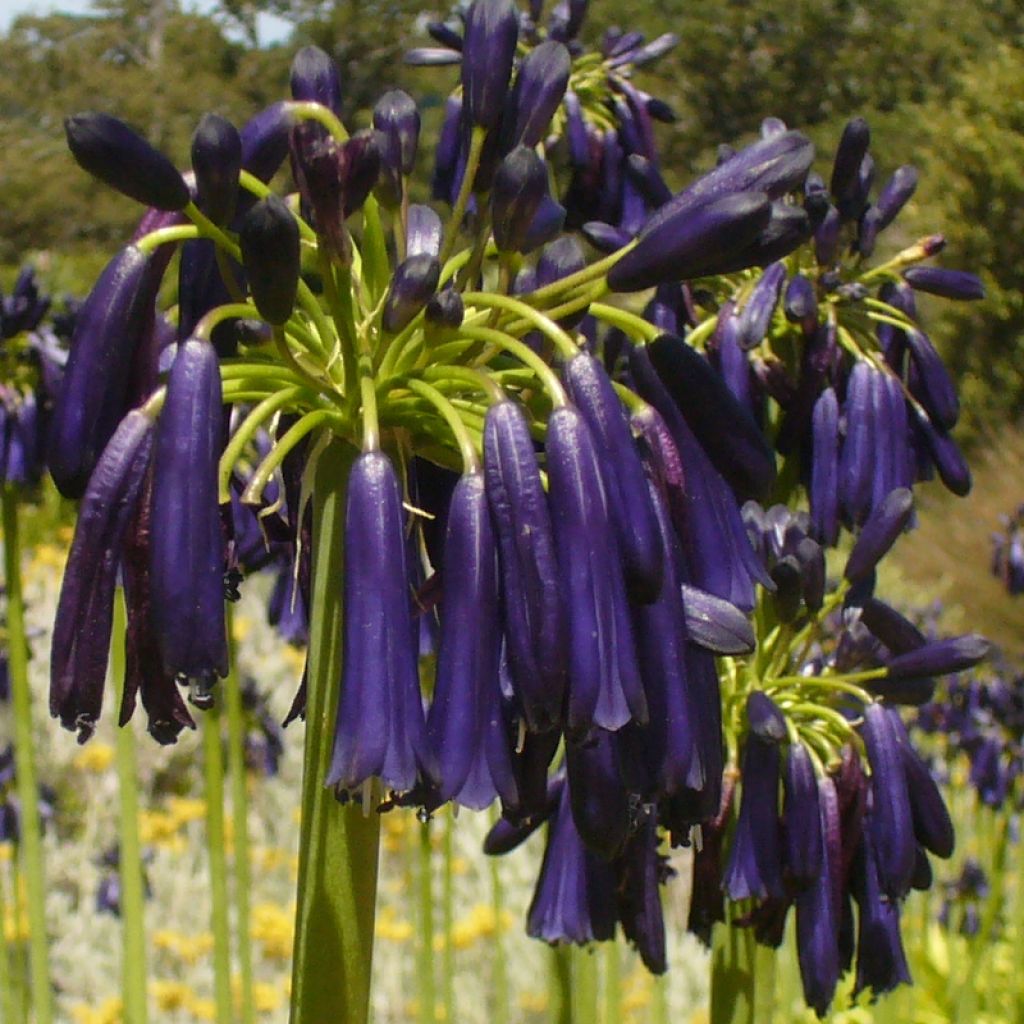

Agapanthus Black Pantha - Lily of the Nile
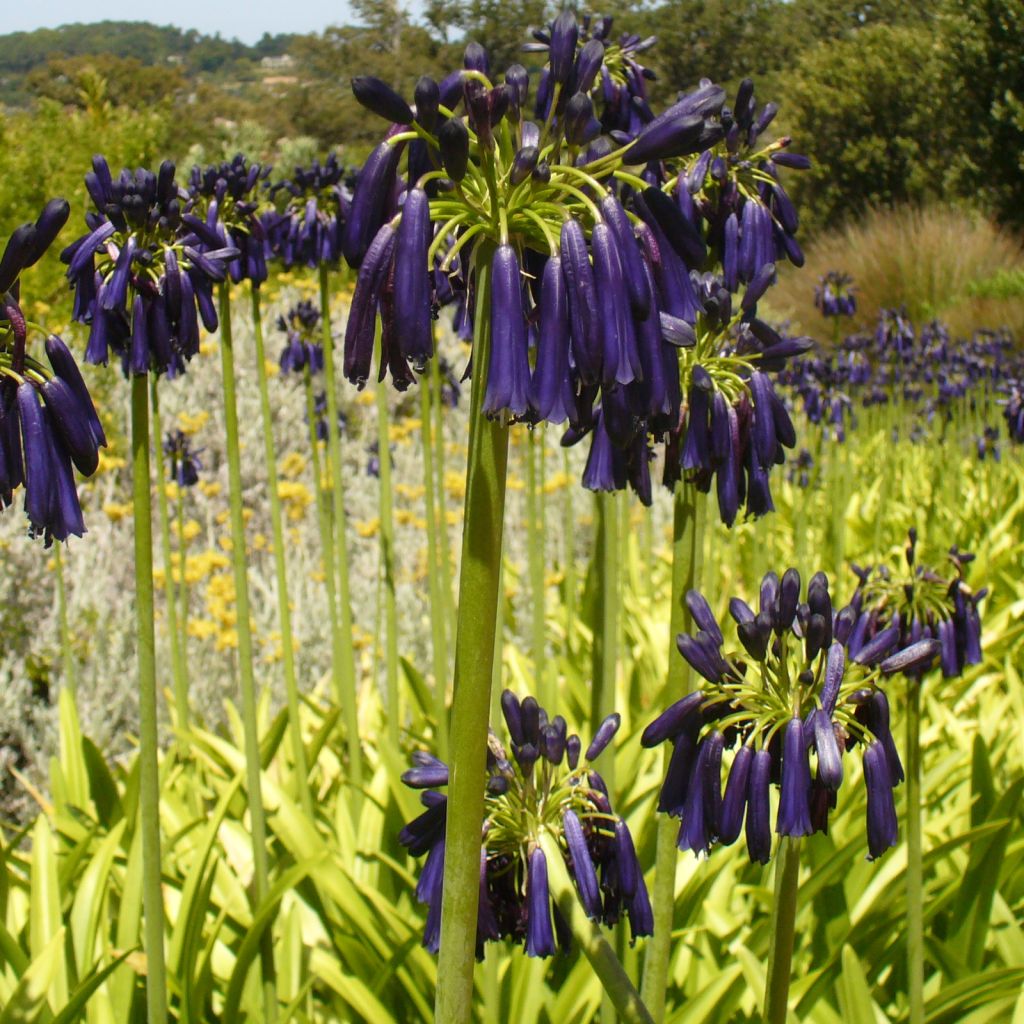

Agapanthus Black Pantha - Lily of the Nile
Agapanthus Black Pantha - Lily of the Nile
Agapanthus x praecox Black Pantha®
African Lily, Lily of the Nile
This item cannot be shipped to the selected country
Delivery charge from €5.90
Delivery charge from €5.90
More information
Schedule delivery date,
and select date in basket
This plant carries a 6 months recovery warranty
More information
We guarantee the quality of our plants for a full growing cycle, and will replace at our expense any plant that fails to recover under normal climatic and planting conditions.
From €5.90 for pickup delivery and €6.90 for home delivery
Express home delivery from €8.90.
From €5.90 for pickup delivery and €6.90 for home delivery
Express home delivery from €8.90.
Does this plant fit my garden?
Set up your Plantfit profile →
Description
The Agapanthus or Agapanthus orientalis 'Black Pantha' is a fascinating large perennial plant with late and abundant flowering. Its flowers, carried at a height of 1.50 m (5ft) from the ground, are a dark lavender blue almost black, and bloom in large regular umbels from July to August. This evergreen variety is unfortunately not very hardy. It produces abundant grey-green foliage. Fabulous when planted in large masses, the flowers last a long time in a vase, making it a truly unique ornamental plant. It should be planted in well-drained soil, in full sun, in a pot or in the ground, and should never lack water during its growth period.
The 'Black Pantha' Agapanthus is a hybrid obtained from Agapanthus orientalis, a perennial plant from the lily family native to the Cape Province in South Africa. 'Black Pantha' reaches impressive dimensions: 1.50 m (5ft) in height when flowering! From July to August, large umbels of black and shiny buds appear, which open into dark blue almost black flowers, in the shape of long trumpets. The foliage is evergreen, particularly abundant, green-greyish, and forms an upright clump. An adult plant will produce several flower stems.
Not very hardy (up to -5°/-8°C (17.6°F)), the Agapanthus Black Pantha is preferably grown in a large pot placed on a sunny terrace to ensure abundant flowering. In the ground, prefer a warm exposure in large masses, in a perennial bed or even in isolation. It is a plant that thrives by the sea, in an English cottage and even in a city garden. Cut and placed in a vase, the flowers will bring freshness and a lot of originality to the house for 12 to 14 days.
Report an error about the product description
Agapanthus Black Pantha - Lily of the Nile in pictures
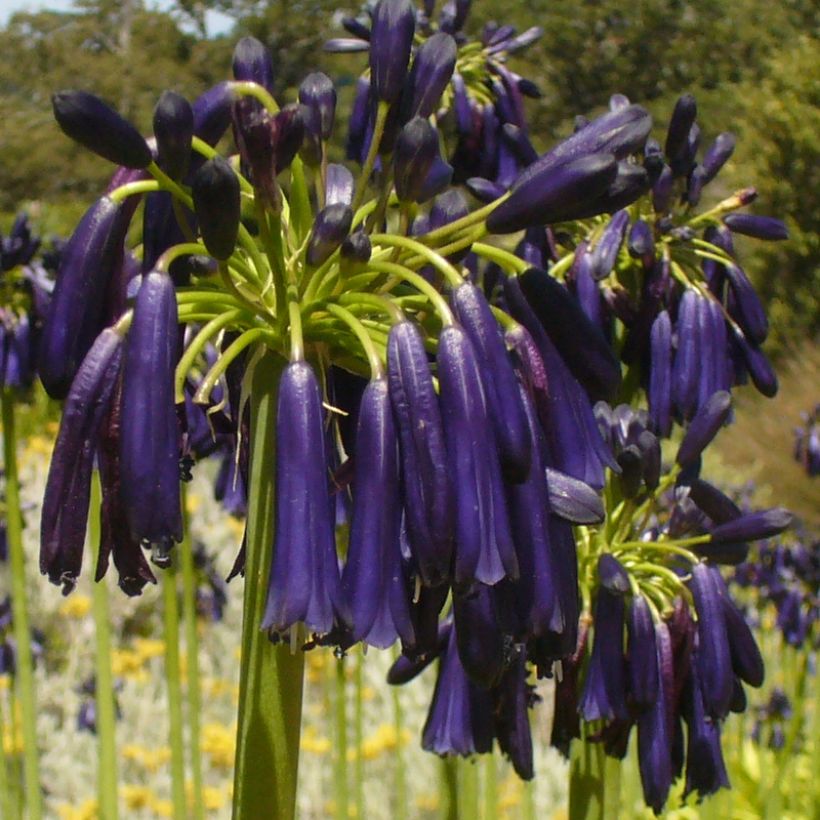

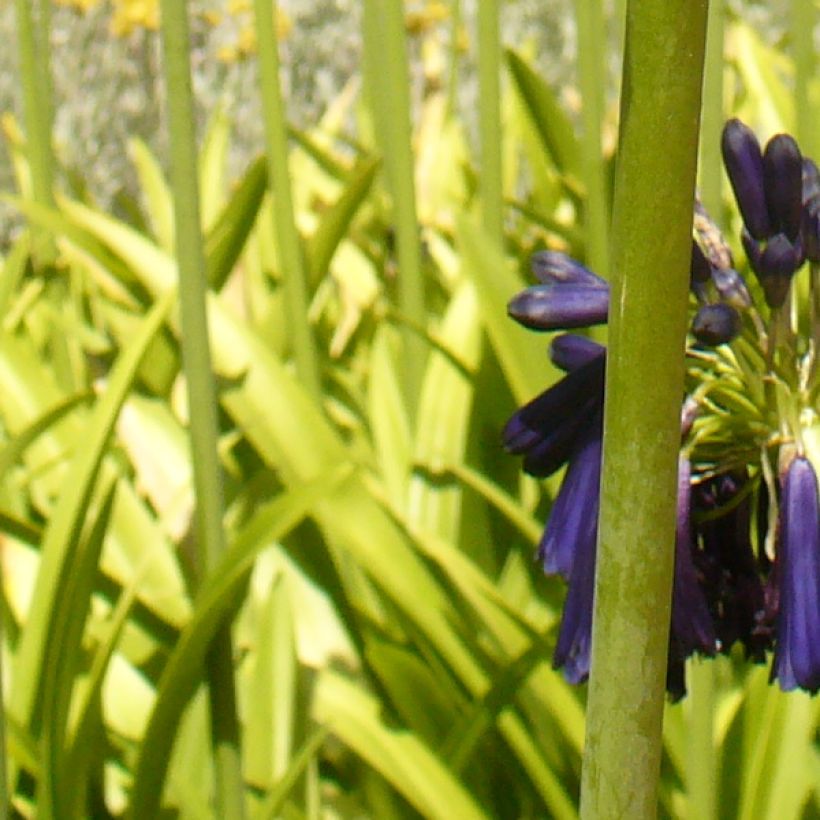

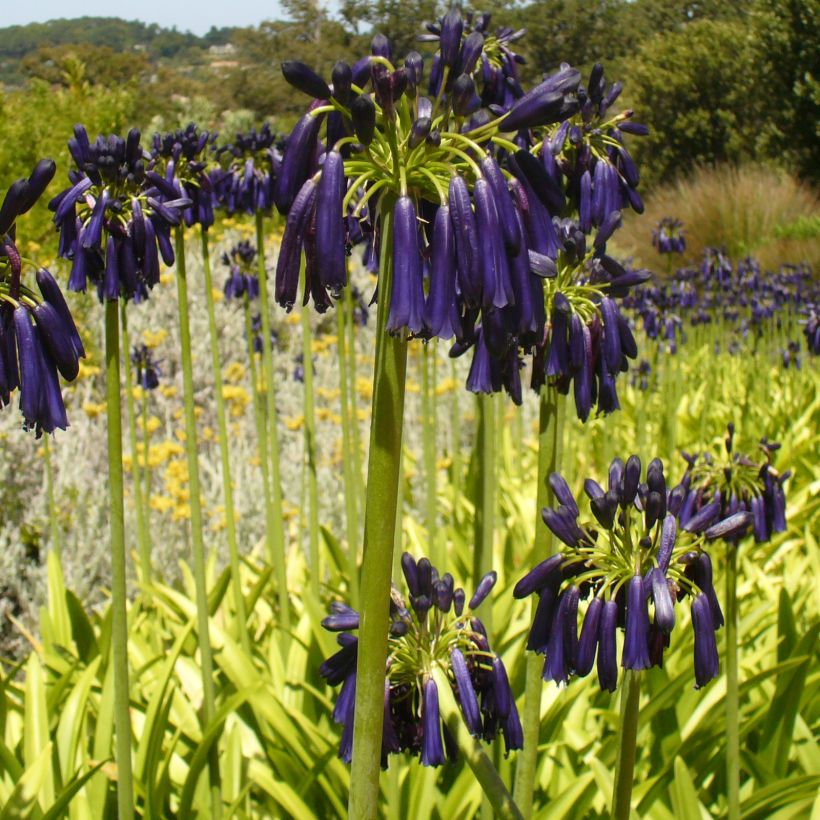

Plant habit
Flowering
Foliage
Botanical data
Agapanthus
x praecox
Black Pantha®
Alliaceae - Liliaceae
African Lily, Lily of the Nile
Agapanthus 'Back in Black'
Cultivar or hybrid
Other Agapanthus - Lily of the Nile
Planting and care
The 'Black Pantha' Agapanthus is grown in full sun in a warm location, in a protected area facing south. It is resistant to drought except during its growth period when you water it twice a week. Do not water them during the plant's dormancy in winter, as Agapanthus dislikes excessive moisture and waterlogged soil during this time. Plant it in rich, moist soil, but most importantly, a well-drained one. Plant it 30 cm (12in) deep in a pot filled with leaf soil and compost. Once established in the ground, do not disturb the agapanthus. In winter, mulch the base with a layer of thick dead leaves, about 20 cm (8in), and cover them with a mesh to prevent wind damage.
Additionally, snow provides excellent protection against excess moisture and cold. If in a pot, bring the plant indoors. Remove faded leaves in autumn. Cut off the withered stems to prevent the plant from exhausting itself by producing seeds.
Planting period
Intended location
Care
-
, onOrder confirmed
Reply from on Promesse de fleurs
Summer flowering perennials
Haven't found what you were looking for?
Hardiness is the lowest winter temperature a plant can endure without suffering serious damage or even dying. However, hardiness is affected by location (a sheltered area, such as a patio), protection (winter cover) and soil type (hardiness is improved by well-drained soil).

Photo Sharing Terms & Conditions
In order to encourage gardeners to interact and share their experiences, Promesse de fleurs offers various media enabling content to be uploaded onto its Site - in particular via the ‘Photo sharing’ module.
The User agrees to refrain from:
- Posting any content that is illegal, prejudicial, insulting, racist, inciteful to hatred, revisionist, contrary to public decency, that infringes on privacy or on the privacy rights of third parties, in particular the publicity rights of persons and goods, intellectual property rights, or the right to privacy.
- Submitting content on behalf of a third party;
- Impersonate the identity of a third party and/or publish any personal information about a third party;
In general, the User undertakes to refrain from any unethical behaviour.
All Content (in particular text, comments, files, images, photos, videos, creative works, etc.), which may be subject to property or intellectual property rights, image or other private rights, shall remain the property of the User, subject to the limited rights granted by the terms of the licence granted by Promesse de fleurs as stated below. Users are at liberty to publish or not to publish such Content on the Site, notably via the ‘Photo Sharing’ facility, and accept that this Content shall be made public and freely accessible, notably on the Internet.
Users further acknowledge, undertake to have ,and guarantee that they hold all necessary rights and permissions to publish such material on the Site, in particular with regard to the legislation in force pertaining to any privacy, property, intellectual property, image, or contractual rights, or rights of any other nature. By publishing such Content on the Site, Users acknowledge accepting full liability as publishers of the Content within the meaning of the law, and grant Promesse de fleurs, free of charge, an inclusive, worldwide licence for the said Content for the entire duration of its publication, including all reproduction, representation, up/downloading, displaying, performing, transmission, and storage rights.
Users also grant permission for their name to be linked to the Content and accept that this link may not always be made available.
By engaging in posting material, Users consent to their Content becoming automatically accessible on the Internet, in particular on other sites and/or blogs and/or web pages of the Promesse de fleurs site, including in particular social pages and the Promesse de fleurs catalogue.
Users may secure the removal of entrusted content free of charge by issuing a simple request via our contact form.
The flowering period indicated on our website applies to countries and regions located in USDA zone 8 (France, the United Kingdom, Ireland, the Netherlands, etc.)
It will vary according to where you live:
- In zones 9 to 10 (Italy, Spain, Greece, etc.), flowering will occur about 2 to 4 weeks earlier.
- In zones 6 to 7 (Germany, Poland, Slovenia, and lower mountainous regions), flowering will be delayed by 2 to 3 weeks.
- In zone 5 (Central Europe, Scandinavia), blooming will be delayed by 3 to 5 weeks.
In temperate climates, pruning of spring-flowering shrubs (forsythia, spireas, etc.) should be done just after flowering.
Pruning of summer-flowering shrubs (Indian Lilac, Perovskia, etc.) can be done in winter or spring.
In cold regions as well as with frost-sensitive plants, avoid pruning too early when severe frosts may still occur.
The planting period indicated on our website applies to countries and regions located in USDA zone 8 (France, United Kingdom, Ireland, Netherlands).
It will vary according to where you live:
- In Mediterranean zones (Marseille, Madrid, Milan, etc.), autumn and winter are the best planting periods.
- In continental zones (Strasbourg, Munich, Vienna, etc.), delay planting by 2 to 3 weeks in spring and bring it forward by 2 to 4 weeks in autumn.
- In mountainous regions (the Alps, Pyrenees, Carpathians, etc.), it is best to plant in late spring (May-June) or late summer (August-September).
The harvesting period indicated on our website applies to countries and regions in USDA zone 8 (France, England, Ireland, the Netherlands).
In colder areas (Scandinavia, Poland, Austria...) fruit and vegetable harvests are likely to be delayed by 3-4 weeks.
In warmer areas (Italy, Spain, Greece, etc.), harvesting will probably take place earlier, depending on weather conditions.
The sowing periods indicated on our website apply to countries and regions within USDA Zone 8 (France, UK, Ireland, Netherlands).
In colder areas (Scandinavia, Poland, Austria...), delay any outdoor sowing by 3-4 weeks, or sow under glass.
In warmer climes (Italy, Spain, Greece, etc.), bring outdoor sowing forward by a few weeks.

































